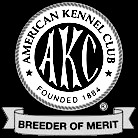|
|
|
Julie
Borst Reed |
|
u |
| u |
| Breeder
Ethics Questionnaire |
| u |
| Puppy Comes Home |
| u |
| u |
| Puppy Temperament Testing |
| u |
| Recommended Diet |
| u |
| FAQs
About Feeding Raw |
| u |
| REAL Dog Food |
| u |
| Fleas 101 |
| u |
| Standard
Poodle Health Concerns |
| u |
| Recommended Vaccination Schedule |
| u |
| Vaccination Decisions |
| u |
| Neutering |
| u |
| Photo Gallery |
| u |
| A Breeder's Life |
| u |
|
Interview
with Dog Breeders' Guild |
| u |
| Poodle Funnies |
| u |
| Tiara Home |
| u |
| u |

|
|
|
Julie
Borst, Breeder of the Tiara Standard Poodles
Interview with Dog Breeder’s Guild – October 1, 2001
Question:
How do you make breeding choices?
Answer:
With lots of research, days, weeks at a time.
In the past, when championships were the childhood goal I bred like
a superficial artist, selecting mating pairs with only my eyes and heart. It worked, champions galore and #1 in the variety one year.
Then it hit me, I had to learn to breed using my brain now as well,
and it's been a real learning process after being rewarded for doing it
the other way for a few decades. The
goal of titles has really lost its appeal.
In the Sixties, each show meant so much and a champion really had
to be something special. As
the rules for cluster shows gave way to more and more shows and thus more
champions and air travel added to the choices, our variety went from
making 3 champions a year as something special to 8 champions a year may
not get you the top breeder spot.
Breeding for championships is a thing of the past here.
I want the best complimentary* pedigree on a solid,
willing-to-please animal that has tested for all the health clearances and
is older than 7 years before I bring him into test with my line.
And then I breed to him at least twice to make certain he is worthy
of adding. I have added very
few lately. I have
never rushed through the generations, always looking at a few dogs'
abilities to produce with several mates.
I do want my dogs distinctive, seems to me, most lines in our
variety lack this. The
breeders continuously seem to be striving for more refinement with each
generation. This refinement
is what most judges are rewarding in the ring today. I hope the trend changes.
Some breeders are utilizing the COI calculations and looking at
their pedigrees past the 5th or 6th generation, all the way back to the 10th
and the incredible inbreeding level that is there. The computer has helped this tremendously.
I also appreciated running combinations and calculations by the
late Dr John Armstrong and/or Kathryn Foran.
Our Poodle variety is unique as nearly all Standard Poodles go back
to 5 dogs of the 1950's as if there were only 5 from which to choose for
breeding. Actually there were
hundreds.
Question:
Do you consider what each choice will do to the genetic diversity?
Answer:
Absolutely. I want to still be breeding Standard Poodles in twenty years,
maybe longer.
Question:
Do you avoid the most popular sires because they are over-used?
Answer:
That's an understatement in this variety!
Standard Poodles are one of the definitive popular sire syndrome
cases. Siberians, Dobermans,
English Springers, and Akitas also come to mind in a hurry for the trouble
the popular sire syndrome has caused.
Twenty years ago I bred a relatively outcrossed litter with an up
and coming dog. He was from
the same line in which I had purchased my foundation stock and I had
purchased a bitch from an "obedience" line to breed to him.
Well, I made two champions out of the litter, but sold them both
because they were a bit disappointing compared to the dogs that were more
inbred that I was buying from the stud dog’s famous family.
Twenty years ago, I wanted to make champions. I also later found out that the one dog was not sound in her
hips and the other was producing mismarks (the breed is to be a solid
color). I had been one of the
first to breed to this young dog and the very first on the East Coast. The dog went on to become number one producer of all time in
the breed. For years, I
avoided him like the plague, never using him a second time and also
avoiding his offspring. Watching
how this country's, then the world's Standard Poodle pedigrees became
polluted with the name. He
was a producer of great character and showmanship and breeders were
inbreeding on this already inbred dog with routine fervor.
Finally, there really was nowhere else to go.
He was used that much. The
mismarks I had seen the size of a quarter were nothing compared to the
blazing bibs produced when breeders inbred on the dog.
I cursed the day I had to incorporate him again, 8 years ago; he
was in the litter's 4th generation. So
far, it’s fine using this line. I have stopped going to conformation
shows, I used to use them as a shopping and learning place.
Now, the merchandise looks like mantelpieces from the same mold and
it is very sad for me to see. The
Internet has replaced the showring as the shopping and learning place for
me to utilize for improvement in my line.
I can only guess that stud was used several hundred times,
reportedly up until he passed on, and a few times since.
We see him lurking in the pedigrees now at about the 5th or 6th
generation with regularity in the winners’ pedigrees.
There are other monsters being made today in our variety. They are not all descendants of that dog, not all of them,
but the winners are all closely related.
They come down from those 5 dogs of the Fifties in such a tight
fashion that unless you are looking at the printout, you wouldn’t
believe the appearance of some of those dogs in the 9th and 10th
generations of over a hundred times.
Dr Armstrong used to challenge me to breed a winner with low
inbreeding. You know, I just may do that.
And there lies the second challenge this decade for me as a
breeder. The first is to find enough dogs to develop the low inbreeding
for more than a single generation.
Question:
Would you breed to one if he were your bitch's best match?
Answer:
What? Best match and a popular sire? That is not a match; we must
make “other” dogs from which to choose for the future.
Question:
Is there such a thing AS a BEST match?
Answer:
No, that's what I thought about the last question.
Question:
What do you consider an acceptable coefficient of inbreeding (COI) and how
many generations do you use to figure your COIs?
Answer:
10% COI / 10 generations 100% known.
Question:
How much do you rely on outcrossing between lines verses linebreeding or
inbreeding?
Question:
How diverse is the gene pool in your breed and is that a good or bad
thing?
Answer:
I believe, with an 18% COI average for 10/100 (10 generations/100%
known) in Standard Poodles it presents the breed with a complicated
dilemma. The dogs are more pre-disposed to hereditary immune-mediated
disease (as reported by their owners and breeders with more regularity
today. We realize we are not alone in this mess as we are witnessing
greater occurrences running in family combinations).
OH, but these same 18% average COI Poodles win BEST IN SHOWS and #1
dog all breeds or way near the top each year around the globe.
Best at the National can be 25% inbred, and everyone still runs to
him with their 18% average cousins and well, you get the picture.
And so, each year those winners have more of the same concentrated
genes, each decade it becomes harder to produce an outcrossed breeding.
In my experience, it is becoming a worsening situation
"thing," to answer your question more directly.
I know a breeder that thinks inbreeding in this variety will prove
to produce super dogs slipping through the genetic pinhole, unscathed by
immune-mediated disorders. I
have already fallen for that, and was part of the experiment with that
mindset. The dogs were some
of the most beautiful and they also produced a high percentage of
immune-mediated health conditions. Not
in just one combination, but in several that I witnessed.
I will err on the side of caution and breed for diversity as that
has been proven to increase longevity by the geneticists conducting
population studies over and again. I
love this variety; I would like it to survive.
Julie
Borst
Tiara Black Standard Poodles
La Jolla, CA
www.standardpoodles.net
www.rawfeeders.com
Home
| About
| Puppy Comes Home
| Equipment
Recommended Diet |
FAQs About Feeding Raw
Recommended Vacc. Schedule |
Vaccination Decisions
Breeder Ethics Questionnaire |
Photo Gallery
Recent
Litters | A
Breeder's Life
| The Dapper Dog by TIARA
|
|
||
|
|
|
|
|
Site
designed by POL |
||



